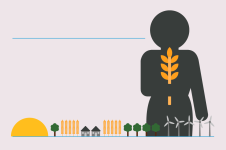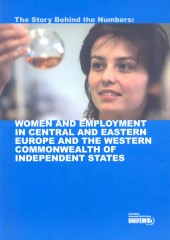The Story Behind the Numbers: Women and Employment in Central and Eastern Europe and the Western Commonwealth of Independent States
This report examines women's labour market situation in the countries of Central and Eastern Europe (CEE) and the Western Commonwealth of Independent States (CIS) in the context of the social and economic transformations in the region in the past 15 years. Using statistical data from the UNECE Gender Statistics Database, the report analyses trends in women's and men's labour force participation during the transition to a market-oriented economy in 18 countries in Eastern Europe and assesses their implications for the economic security of both women and men.
By framing the analysis within the social, political and economic context of this transition, the study highlights several questions to which the available statistics cannot by themselves provide answers, including changes in the status and wage levels of public sector vs. private sector jobs, the increase in different forms of informal employment, and the distribution of women and men across them. This "story behind the numbers" illustrates the various ways in which women's economic security has declined following the collapse of state socialism, and points to the data needed to fully measure the changing labour market position of women and men.
The study concludes with specific recommendations for improving the available data, including those related to the development of the national statistical systems of countries in the region and their harmonization with international and EU frameworks, as well as new data and analysis designed to understand and highlight gender differences. Among these, data on informal work, on the links between employment and family life, on the intersection of gender and other sources of disadvantage, and on migration and trafficking are particularly important.
The study also suggests specific policy measures that need to be taken to improve the disadvantaged position of women in the labour market. Three are highlighted: improving women's access to decent paid work; allowing women and men to better balance work and family life through the use of various tax-benefit schemes; and adopting transparent job evaluation and wage setting mechanisms that help create standards for equal pay for comparable work.






